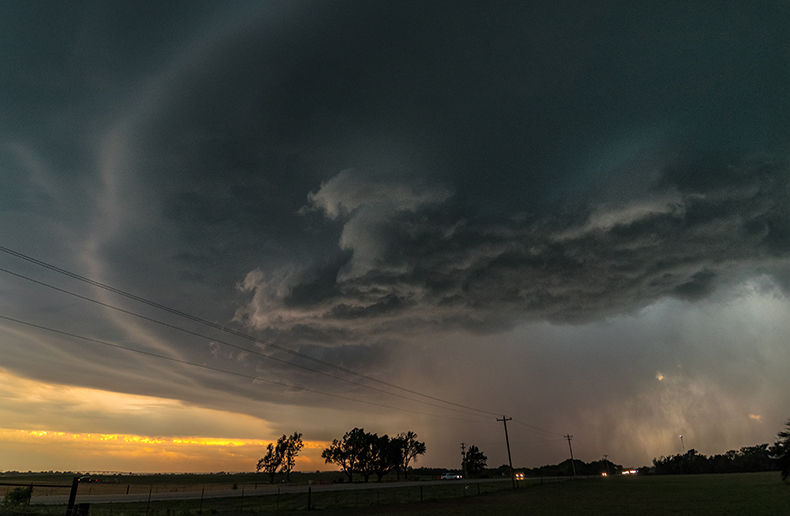The prolonged stock market slowdown has caused worry among brokers and insurance companies concerning a potential pitfall in universal life insurance policies. Their anxiety has prompted companies to introduce new features, and brokers to review their clients’ policies.
The unease is specifically to do with policies that employ a feature that will automatically reduce the policyholder’s death benefit coverage amount when the investment portion of the policy decreases in value. The feature is designed to keep the cost of insurance as low as possible to maintain the policy’s tax-exempt status. The threat with it is that, in volatile markets, clients could end up paying significantly more taxes with this feature than without it!
The downside of this feature is not evident in up markets, but now that we are seeing prolonged depressed markets, the risk of having to pay huge amounts of tax is apparent, argues Jim Britton, Managing Director of IPC Insurance Strategies Inc.
“This feature backfires when the investment portion of the policy experiences major market fluctuations such as those encountered with equity funds. If the market goes down the death benefit is lowered, but the death benefit can only be increased 8% per year,” explains Mr. Britton. “So when the market suddenly goes up, too much money is kicked out into the side account from [the investment portion] and then taxed – the very thing it was designed to avoid.”
“The money in the side account is taxed as income on the amount exceeding the adjusted cost base,” he continues. “This is almost double the tax paid on a good quality mutual fund. Also when the policy values drop, the amount sitting on the outside is automatically reinvested into the policy and you once again pay the premium tax. The amount once transferred in is now sheltered from tax again on the growth. New problem: where does the client get the money to pay the tax if it is automatically reinvested in the policy before the tax is deducted? From another account? From their UL? If from another mutual fund, you would suffer disposition taxes on the mutual fund, and if from the UL you will suffer the tax on withdrawal again. It’s a lot of unnecessary tax don’t you think?”
Lack of awareness
Compounding the problem of this risk is the lack of awareness of it, states Mr. Britton. “We are currently in a market downturn. If it recovers quickly, a lot of people will be paying a lot of tax. These people were probably not informed of the risk – most likely because the brokers did not know about the risk – and so the companies may start to hear from some angry consumers and brokers.”
“Universal life policies are always illustrated using linear growth rates, and so down periods are never seen. Companies should be at least illustrating proper market fluctuations and the resulting tax implications of using this feature to its brokers and policyholders. … Agents are being duped,” exclaims Mr. Britton. “UL is supposed to be tax-free!”
Furthermore, since the death benefit is reduced in bad market times, “the client should only die on good years,” he says.
One suggested solution for keeping the policy on side when the markets are up is for the policyholder to just buy more insurance. “Yes,” replies Mr. Britton, “But unfortunately no company has the mechanism to report the problem until after the policy anniversary and that is too late.”
“The insurance industry is teaching brokers to just put the least amount of insurance on, paying the maximum premium, so I’m walking the MTAR (maximum tax actuarial reserve) line. Then what I’m going to do is put 100% of my money into equity. This is the industry standard.”
The MTAR line is the maximum amount of funds that can be placed into a policy without causing the plan to become non-exempt.
“Generally speaking, we were looking at taking taxable money and moving it into a tax sheltered environment,” adds Russ Elford, an independent financial advisor. “That’s how this product is and was promoted. We should not pay for any more insurance than is absolutely necessary in order to tax shelter this exactly to the point where it mirrors the MTAR line. Therefore, theoretically, it would present greater cash accumulation within that vehicle and could be promoted accordingly. It’s a great concept and makes a lot of sense. In essence, we walked the MTAR line without understanding the risks associated with doing that. It performs exceptionally well in a perfect-world illustration. Unfortunately, … we don’t live in a perfect world.”
“My concern for the industry,” adds Mr. Elford, “is that brokers will sell these types of policies without understanding the risk involved.”
These brokers also warn that not all illustration software are created equal. Good illustration software should be able to simulate the markets and perform the Exempt Test Policy every 12 months. Not all do this. One company’s software, says Mr. Britton, “actually lies in its software. … It built into its software a method by which it figures out the highest peaks all the way through [the simulation], even if it’s 47 years in the future, and then it puts enough insurance all the way back to issue date to make sure that the illustration shows that there is no tax. That’s how they designed the software to lie to the planner! This is called ‘back filling.’ They go to the highest point and they back fill with just enough insurance to keep it so that there are never any forced withdrawals. And this is what the brokers are using to sell this product.”
Using a more realistically simulated market rather than a linear simulation, Mr. Britton demonstrates how it is easy to have over $100,000 of tax payable. “So one minute the illustration looks good, next minute it doesn’t,” he says, “because I’ve now applied an equity investment to someone that has got a product where the broker was taught by the insurance companies to walk the maximum tax actuarial reserve line.”
Insurers react
Although the risk of this feature is just coming into light, it seems that insurers are well aware of it and are trying to caution brokers on its implementation. The Insurance Journal contacted a few of the larger players in the UL market to see how they are presenting this feature.
“It is definitely not for everyone,” stated Teresa Walkey, Product Director at Manulife Financial. Manulife calls its feature Wealth Enhancer Plus.
The company just launched this feature on September 15. “In doing so we were acutely aware of some of the issues with this kind of rider that other companies have experienced since they have been selling it for a longer period of time,” said Ms. Walkey.
“In our mind this coverage fills a unique need. So we were very careful to position it the same way you would with any investment fund. What has worried me is that I’ve seen it positioned by other people as a solution for everyone, and it’s not any more than investing in mutual funds with high volatility is for everyone,” said Ms. Walkey.
“The advisor has to be very careful to explain the risk and return tradeoffs the same way they would with a mutual fund,” she continued. “We’ve counselled our advisors to do a couple of things to alert their clients to the sensitivities of this kind of rider to volatile investments performance. That’s the big risk. And a lot of companies that were in the market in the past year with this kind of rider have some horror stories to tell about clients that weren’t appropriately advised.”
To help explain the risk to the brokers and clients, Ms. Walkey stated that the company’s software has the power to illustrate a different interest rate year-over-year. “This is extremely important in universal live illustrations because I have never seen the market perform at 6% or 5% year after year consistently for 30 or 40 years. It just does not happen. They are going to have very good years and they are going to have years that aren’t so good.”
She said the company recommends using this feature for more conservative investors where the equity-type volatility does not exist in the investment side of their product. “And for sure this is not an estate solution!” she emphasized. “This is a solution for people who are focusing on the account value side of the product.”
Since clients’ circumstances can change, said Ms. Walkey, Manulife sends out letters to both the advisor and the client, at year-five when the feature is scheduled to start, saying something like: “You signed up for this type of coverage. We just want to remind you what can happen in volatile interest environments, or if you withdrawal from the policy, what can happen. Do you still want us to turn this thing on for you?”
“If they sign-off on it then we know that they have been appropriately advised about the risks and benefits of this rider, and we turn it on and away we go,” stated Ms. Walkey.
The Optimizer is the term Transamerica Life Canada uses for its death benefit feature. To limit the exposure of paying taxes, the policyholder can set a maximum death benefit reduction percentage. If this is set at 15%, for example, the death benefit cannot be reduced by more that 15% per year.
“This minimizes the risk of paying taxes,” says Pierre Vincent, Vice-President, Marketing Life Products, Transamerica.
“The Optimizer option is for a specific type of risk,” explained Mr. Vincent. “If the client wants to invest in the NASDAQ, then this option is not a good choice.”
Maritime Life’s reducing death benefit feature is called Minimized Coverage Plus. Bob Brown, Director of Retail Product Development said he has also heard similar criticisms about the risk. “We addressed this issue with a feature called the Stabilizer,” he stated. “The Stabilizer stores credit on good years to even out returns in down periods, thereby smoothing out the returns over time.”
Stabilizer, he said, was developed in response to the risk of the down market situation concerns. Maritime has not faced any negative consequences with its Minimized Coverage Plus option yet because it has not existed long enough, explained Mr. Brown. This feature will only be active in roughly two years on the first policies that chose it.
In general, he continues, this risk is not addressed very well in the UL illustrations because not all companies use realistic software. “All of our show simulated markets as well as historical ones. We provide the proper tools and disclosure to our brokers. It’s very important that realistic market volatility be shown.”
Roland Johnson, Vice-President of Marketing for Individual Life Insurance at Standard Life, said his company’s feature, called the Shelter Optimizer, was introduced a year and a half ago.
Mr. Johnson said the company sends a letter to the client before lowering the death benefit to avoid getting sued!
“This is because if the client dies and was expecting one million in coverage, but the policy value was reduced to, say, $900,000, the beneficiary could say: ‘we did not authorize this type of thing.’ The client must clearly realize the consequences.”
At Standard Life, increasing the death benefit also requires contact with the client – this time to collect proof of mortality. “We’ll allow the decrease as much as the client wants once per year, but the increases require proof of insurability,” stated Mr. Johnson.
But the death benefit should only be decreased if this coverage is not needed anymore, he explained. “This will also help to not pay too much in premiums, and shelter taxes. The feature should really only be used if put a lot of money in the policy.”
Mr. Johnson added that although universal life is still the most popular product, people are looking at more guaranteed investments so now he is expecting some change in investments or types of policies purchased.
The company that claims the most experience with this feature is National Life. Its feature is called the Minimized Death Benefit Option. “We were the first with it back in the 1980s, so we think we have a lot of experience with this feature,” stated Promod Sharma, Actuary, Individual Insurance. “We focus primarily on wealth accumulation-type policies, so the minimized-sum-insured is one of our big sellers.”
National Life has also recently developed an additional option to help reduce the risk of facing hefty taxes.
The company introduced the Maximum Death Benefit Reduction Percentage a few months ago, said Mr. Sharma.
It can be set between zero and 100%, but is typically set at around 20%, he explained. “In the past the markets were doing well and there was no need for this feature. [Now that the markets are down] we expect that they will rebound over time, but if your death benefit has dropped too much, then there is no way that you can get it back to the level it was at. And so we also offered this feature on our in-force policies so that they could also take advantage of this new option.”
“We introduced it because the market downturns were taking place,” confirmed Mr. Sharma. “We wanted to make sure that the policies could perform better even in the down markets,” added.
National Life also has an option for a death benefit “floor,” which is a dollar amount it will not fall below. “Typically people won’t use that floor,” said Mr. Sharma. “They want the policy to behave the way it’s supposed to. If it is set too high then essentially you have a level policy and not a Minimized policy. There is also a cost for maintaining too much insurance. We’ve had that floor option since the beginning.”
As for advising brokers about the risk and features available to limit it, Mr. Sharma said that education is always a challenge. “It’s hard to know what is specifically communicated to the policyholders. All this can be illustrated with the software, and it is clear in the contract. But there is always that challenge of communication is this life insurance industry of ours.”
The Minimized feature is used in the majority of National Life’s YRT-based cases, he said. “YRT vs. Level is about 55%. It was 65%, but after September 11 there has been a fairly big drop-off in investment-based sales in the financial services sector and we’ve also been affected by that.”
Risk still looms
Mr. Britton doubts that adding features to restrict the amount the death benefit can automatically drop is an adequate solution. “I feel this is a band-aid solution. Planners should monitor the values and manually review the policy with the client. Some planners do both a small percentage and perform an annual review. Most do nothing, as they are not aware of the impending risk.”
The feature should only be used if the client selects GIC investment options, he maintains. “We have found only one area where it works with equities, and that is for high-net-worth clients doing immediate leverage on their accounts. This would represent a very small percentage of insurance companies’ sales. Therefore the majority are placed on policies and will be creating terrible tax risks.”
As for Mr. Elford, who says he has sold quite a number of policies with this feature, he is now in a process of revisiting those policies and turning off the feature.
“As an advisor monitoring the total portfolio, and assessing it, I want to be in a position where I can review that product and if I feel that I want to reduce the amount of insurance, then we make that call together. It’s just not an arbitrary thing that happens as the markets go up and down,” he says.






